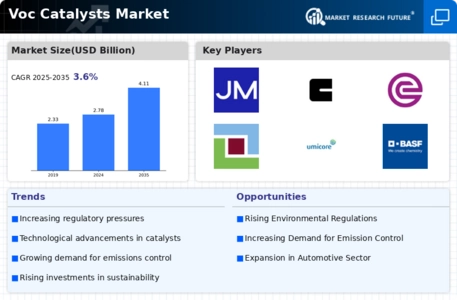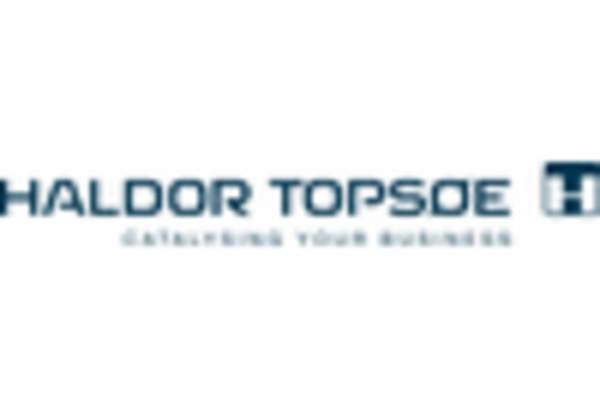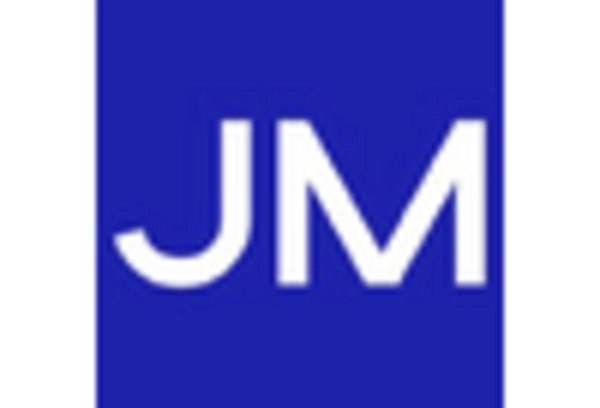Growth in Industrial Applications
The Global Voc Catalysts Market Industry is witnessing a surge in demand due to the expansion of industrial applications across various sectors, including paints, coatings, and adhesives. Industries are increasingly recognizing the importance of VOC catalysts in reducing emissions and improving product quality. As manufacturers strive to meet consumer expectations for environmentally friendly products, the adoption of VOC catalysts is becoming more prevalent. This trend is likely to enhance the market's growth trajectory, as industries invest in cleaner production processes to comply with regulatory requirements and consumer preferences.
Increasing Environmental Regulations
The Global Voc Catalysts Market Industry is experiencing growth driven by stringent environmental regulations aimed at reducing volatile organic compounds emissions. Governments worldwide are implementing policies that mandate the use of catalysts in industrial processes to minimize air pollution. For instance, the European Union has established regulations that require industries to adopt cleaner technologies, thereby increasing the demand for VOC catalysts. This regulatory landscape is expected to bolster the market, contributing to its projected value of 2.78 USD Billion in 2024 and a further increase to 4.11 USD Billion by 2035, reflecting a compound annual growth rate of 3.62% from 2025 to 2035.
Rising Demand from Automotive Sector
The automotive sector is a major driver of the Global Voc Catalysts Market Industry, as manufacturers seek to comply with stringent emissions standards. The shift towards electric vehicles and hybrid technologies is also influencing the demand for VOC catalysts, as these vehicles require advanced emissions control systems. As the automotive industry evolves, the need for effective VOC management solutions is becoming more pronounced. This trend is expected to contribute to the market's growth, with projections indicating a rise from 2.78 USD Billion in 2024 to 4.11 USD Billion by 2035, driven by the increasing adoption of cleaner technologies.
Technological Advancements in Catalysts
Technological innovations in catalyst formulations and applications are propelling the Global Voc Catalysts Market Industry forward. Advances in nanotechnology and materials science have led to the development of more efficient and durable catalysts that can operate under a wider range of conditions. These innovations not only enhance the performance of VOC catalysts but also reduce operational costs for manufacturers. As industries increasingly adopt these advanced technologies, the market is likely to witness significant growth, aligning with the overall trend of increasing investment in cleaner production methods.
Consumer Awareness and Sustainability Trends
Growing consumer awareness regarding environmental sustainability is significantly influencing the Global Voc Catalysts Market Industry. As consumers become more informed about the impact of VOC emissions on health and the environment, there is a rising demand for products that utilize VOC catalysts to mitigate these effects. Companies are responding by integrating sustainable practices into their operations, thereby driving the adoption of VOC catalysts. This shift towards sustainability is expected to support the market's growth, as businesses align their strategies with consumer preferences for greener products.

















Leave a Comment